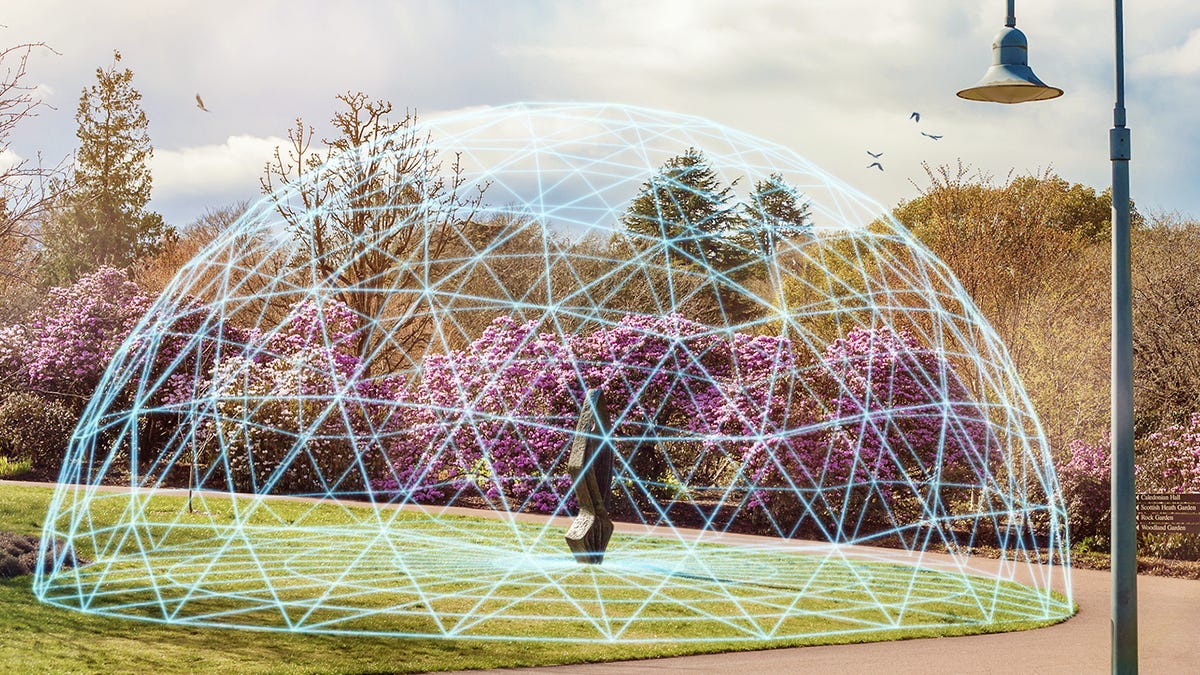Pokemon Go Maker Niantic Is Building a Massive Social AR Gaming Network

Niantic's mapping of real-world locations will use scans submitted from phones through a new app.
What's happening
Pokemon Go maker Niantic is expanding its AR software to blanket the world with a 3D map for apps and games.
Why it matters
Many big tech companies are currently linking maps to AR-ready location data, including Meta, Google, Microsoft, Snap and Meta, in advance of AR glasses plans.
What's next
Niantic's working with a wave of developers on phone apps that will take advantage of the new tools soon.
Niantic, creator of Pokemon Go, joins a trend with its newest initiative for crowdsourcing real-world location-scanning using phones. The news, announced at Niantic's first developer conference for its AR-based Lightship platform this week, is another step toward the company's goal of linking its various games and apps into a common social platform, creating "reality channels" that will work with future smart glasses.
In the same way that your local neighborhood probably has community Pokestops and gyms, imagine that but for a universe of games and services connected to AR, or augmented reality. Niantic's new world-mapping technology is leaning on community-based, crowdsourced scans to build a global map that future phone apps can draw on -- and, eventually, AR glasses too. Announced Tuesday at its first developer conference for a wave of AR-connected apps using the company's Lightship platform, Niantic's new Visual Positioning System points to where many AR developers are at right now: striving for a global grid to make massively collaborative location-based experiences work.
Niantic's real-world scanning doesn't need lidar on phones, but creates depth maps.
For the AR glasses of the future to function usefully, there will need to be maps of the real world that the glasses can interact with and understand. Niantic, the company behind Pokemon Go, is one of many companies now focusing on mapping to create an underlayer of location points and scans of real-world places that virtual things can layer on top of properly, and that will stay in place so others can find them.
Niantic's far from the only company working on world-mapping for AR: Snap is scanning cities. So are Apple, Google, Microsoft and Meta. While Niantic is doing its own city scanning to bring a number of locations into its own worldwide map data, the company's doing something unique by leaning on community-contributed scans to build out other locations.
One of Niantic's heat maps of available locations, in Tokyo.
Niantic is also doing its own city-based location scanning in Tokyo, New York, the San Francisco Bay Area, London, Seattle and Los Angeles. But the company's also consulting "heat maps" of already-popular player locations from its games Pokemon Go and Ingress as signs of where to build out more location-scanned territories in the future. Meanwhile, if any developers want to add locations in unmapped areas, they can do that via Niantic's new Wayfarer app, which submits scans of new locations.
There are already 30,000 locations that are ready for AR games and apps on Niantic's VPS map, according to the company, with many of these places deliberately scattered across public places and parks. There are ways to delist an already-submitted location in case someone doesn't want their own property to be part of the VPS mapping, which apparently works similarly to how people can delist Pokemon Go waypoints.
Some examples of real-world AR in Niantic's platform, via developer Pixelynx.
While Niantic already has plans with Qualcomm to work on future AR glasses, the tech is still phone-based for now, as with the game Pokemon Go, where players hold their phones up at locations to see virtual objects overlaid on their screens. Eventually, the aim is for these world-mapped AR games to work between phones and glasses, discoverable in what Niantic CEO John Hanke calls "reality channels."
A social network developed by Niantic, called Campfire, aims to be the glue between these various apps on the VPS grid. Events and chat will happen in Campfire while live games and experiences happen nearby, and Campfire will be a sort of local way to find out what things are happening that you might want to know about. In a sense, it sounds like Discord for AR.
Persistent overlaid real-world AR is something that's already happening via phone apps, and Niantic's forming more partnerships with developers working in these spaces, including newly announced investments in meditation app Tripp and music-gaming venture Pixelynx. Immersive theater company Punchdrunk, creator of Sleep No More and The Burnt City, still has an unrevealed project in development with Niantic as well.

